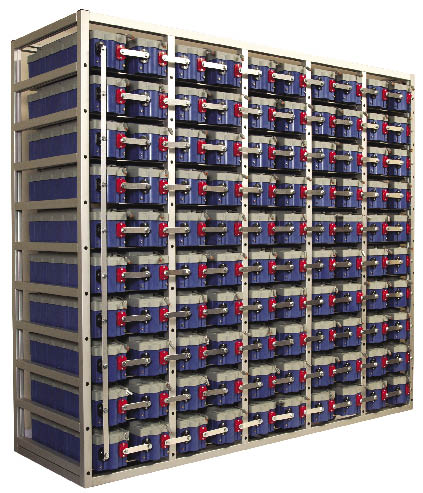One of the largest, most environmentally-friendly, battery-based energy storage systems (ESS) in the United States will be installed at the University of California, San Diego the campus announced. The 2.5 MW, 5 MWh system—enough to power 2,500 homes—will be integrated into the university’s microgrid, which generates 92% of the electricity used on campus annually and is considered one of the world’s most advanced microgrids. A microgrid is a small-scale version of a traditional large power grid that controls energy from clean sources such as wind and solar power, as well as from conventional technology. It can be connected to a larger electric grid, but can also work independently.
“UC San Diego is committed to practices that promote sustainability and innovation, not just on our campus, but in our community and our world,” said Gary C. Matthews, Vice Chancellor for Resource Management and Planning. “Energy storage has the potential to transform the global energy landscape. It can help make renewable energy sources more reliable and is critical to a resilient, efficient, clean and cost-effective grid. We are proud to help advance this technology.”
Energy storage systems are technologies that convert electricity into another form of stored energy and then convert the energy back to electricity at another time. Energy storage helps integrate intermittent renewable resources, such as solar power, and provides power when it is needed for consumption. The technology is considered key to enhancing grid reliability as well as grid resiliency in the face of adverse conditions.
Energy storage is considered so important that the California Public Utilities Commission (CPUC) decided last year to establish an unprecedented energy storage target: 1.3 gigawatts (GW) of energy storage is to be procured and installed by three of the state’s investor-owned utilities by 2024. The CPUC’s mandate broke new ground by trying to establish a regulatory system in which utilities, third-party storage providers and potentially customer-owned storage assets can play an integrated role.
The 2.5 MW, 5 MWh energy storage system at UC San Diego was purchased from BYD, the world’s largest supplier of rechargeable batteries. BYD’s energy storage system uses high performance lithium-ion iron-phosphate batteries that are known for being highly reliable and environmentally-friendly. The company’s rechargeable batteries contain no heavy metals or toxic electrolytes and, during the manufacturing process, all caustic or harmful materials are avoided. The batteries are also considered non-explosive and fire-safe, even in direct flames. The company has supplied more than 100 MWh of fixed energy storage stations around the world.
“UC San Diego is renowned for their efforts in green energy production technologies and we are thrilled to partner with them,” said Stella Li, BYD Corporate Senior Vice President. “Together, we seek to ensure that renewable power can be utilized as a reliable generation source enabled by environmentally-friendly battery storage.”
The 2.5 MW, 5 MWh energy storage system is the latest addition to UC San Diego’s portfolio of energy storage devices – one of the most diverse energy storage portfolios of any university in the world. Other devices currently in place include the following with additional energy storage projects being planned as well:
- 30 kW ultra-capacitor-based energy storage system from Maxwell Technologies, Inc. The system will be combined with Soitec’s Concentrated Photovoltaic (CPV) Technology, which is already installed on campus.
- Second-life battery demonstration site. Although electric vehicle batteries usually only have a vehicle lifetime of 8 to 10 years, they still have significant capacity left for alternative uses, such as stationary energy storage.
- 3.8 million gallon thermal energy storage. Waste heat from the plant also is used as a power source for a water chiller that fills a 4 million gallon storage tank at night with cold water. The water is used during the warmest time of day to cool campus buildings.
Once the 5 MWh advanced energy storage system is installed in spring 2015, UC San Diego will be eligible for up to $3.25 million in financial incentives through the Self-Generation Incentive Program. This is a California ratepayer-funded rebate program that provides incentives for the installation of clean and efficient distributed generation technologies. The program is overseen by the CPUC, and is available to retail electric and gas customers of the four California investor-owned utilities: Pacific Gas & Electric, Southern California Edison, South California Gas and San Diego Gas & Electric (SDG&E). The Center for Sustainable Energy is the program administrator for the SGIP for the SDG&E territory.
UC San Diego
www.ucsd.edu
Filed Under: Energy storage, News





